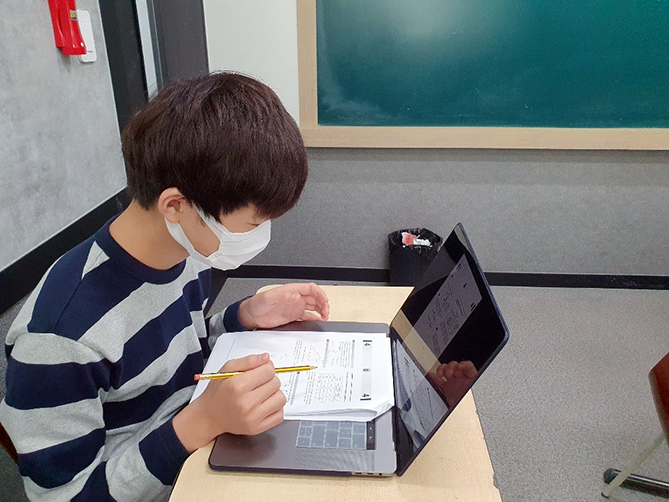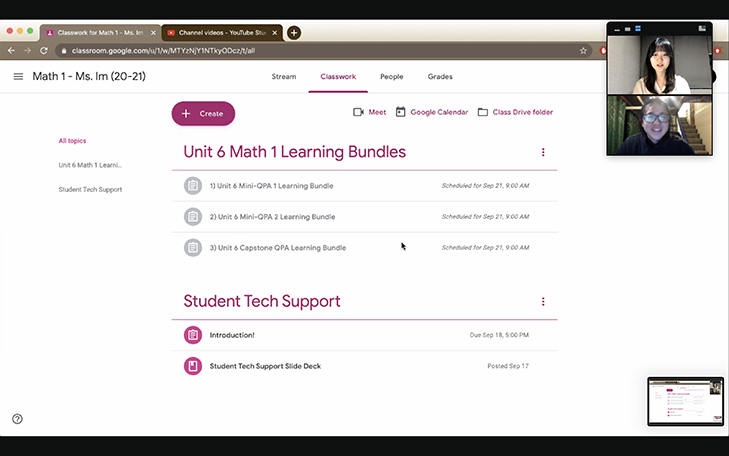Paul Kim, my cousin, wakes up, gets ready for school, and then opens his laptop. It’s his 7th grade English final exam day at a school located in Massachusetts. However, Paul was actually here in South Korea, forced to match the hours of his school back in the U.S. due to the COVID-19 pandemic. The COVID-19 pandemic has made it unsafe for him and many other students around the world to gather in person for classes. For them, distance learning has become the new normal. Their classes are held on virtual meeting platforms, such as Zoom or Google Classroom. “All you have to do is get on Zoom, and when that Zoom’s over, get on the next Zoom,” says Paul. However, distance learning means lots of screen time.

Screen time guidelines exist for a good reason. Research has shown that kids who spend a lot of time in front of screens are more likely to have eye problems, weight problems, and trouble with reading and language. They are also more likely to suffer from a wide range of other physical and mental health issues. Right now, however, screens are the only safe way for many young people to learn and socialize. So, how should kids and teens like Paul navigate this dilemma?

“I think it’s dangerous to say screen time is bad,” says Scarlet Lim, a current Teach for America instructor at a local public school in Massachusetts. She explained that different types of screen time have both costs and benefits. “You should be mindful of how much screen time you get,” she says. But for many families, the biggest concern is having the right device to create an effective distance learning environment.
The biggest problem with screens is that people usually sit still while they watch or interact with them. “If students are spending all day sitting in front of screens, when are they moving?” asks Scarlet. Extended time sitting and not moving around leads to changes in the body’s metabolism. These changes make obesity, diabetes, heart disease and other health issues more likely.

It’s one thing to worry about screen time when you have your own computer or phone. But for many students, the real worry is how they are going to participate in virtual classes. Almost one in every five U.S. students doesn’t have reliable access to a computer at home, the Pew Research Center finds. (Pew is a non-partisan research group that performs data-driven research. https://www.pewresearch.org/)

Throughout the interview, Scarlet also mentioned her own concern about students being unable to participate, at first. When her school switched to distance learning, she remembers thinking, “I don’t know how many students are going to be able to pull this off.” She started with 19 students in her class. By the end of the year, only about half showed up regularly.
These children’s households lack the computers or internet access needed to make online learning possible. Scarlet said, “They fall into a homework gap that is turning into a larger education gap during this crisis”. She is developing a cloud-based management program that will support internet access for students at her school. “No student should be left offline,” she says.
In some ways, distance learning has been a good change. Now, my cousin Paul enjoys setting his own schedule. He also says that the availability of online lectures allowed him to set his own schedule and pace. Paul also notes that his relationship with teachers, students, and families have improved because he has had more one-on-one conversations with them as they struggle to figure out the “new normal.”
While the COVID-19 pandemic is far from over, every individual needs to take more responsibility in tackling the issues arising in every aspect of our lives. Scarlet concluded the interview by pointing out that, through all the ups and downs, “we ultimately became closer” as a community.
She hopes everyone will take the positives from distance learning with them when they go back to in-person classes.

Yeojin Kim
Senior (Grade 12)
The Learning Community International School

